#Openbill Stork
Text

Asian Openbill Storks (Anastomus oscitans), family Ciconiidae, order Ciconiiformes, Sri Lanka
photograph by Bala Siva
#stork#openbill stork#anastomus#cicnoniidae#ciconiiformes#bird#ornithology#wading bird#animals#nature#asia
174 notes
·
View notes
Text

African Openbill
2024
1 note
·
View note
Video
youtube
Asian Openbill Stork In Kukkarahalli Lake Mysore (HD)
#youtube#Stork#Openbill#Openbill Stork#Asian Openbill Stork#Bird#Birds#Nature#Wildlife#Large Wader#Kukkarahalli Lake Mysore#Kukkarahalli Kere Mysore#Wet Lands#Bill Open In Centre#Migratory Bird#Large Bird
0 notes
Text

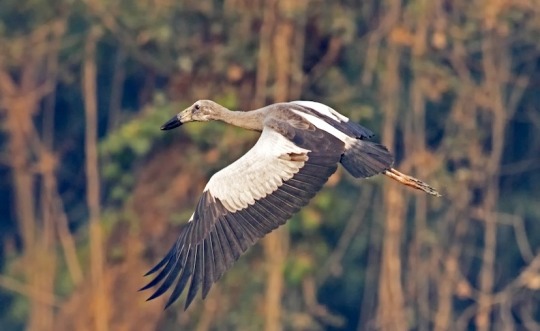


the asian openbill is a large stork found primarily in southeast asia. they are named for the notable gap between mandibles in adults; the mandibles are ridged and assist the birds in opening the shells of snails, their primary food source. juveniles lack this gap. these birds are typically social and often found gathering in noisy flocks. during the off season season, they are gray; in the breeding season, they are while, with shiny iridescent black wing markings & tail feathers.
495 notes
·
View notes
Text
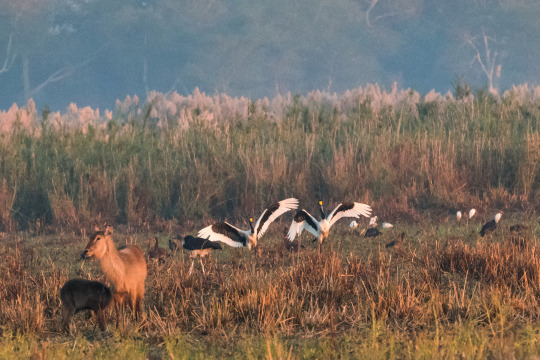
Common waterbuck Kobus ellipsiprymnus
With marabou stork Leptoptilos cruminifer (midground, walking), saddle-billed stork Ephippiorhynchus senegalensis (midground, wings spread), spur-winged goose Plectropterus gambensis (background, between/behind waterbucks and storks), African openbill Anastomus lamelligerus (right background), African spoonbill Platalea alba (far background)
Observed by lemoncul, CC BY-NC
#Kobus ellipsiprymnus#common waterbuck#Bovidae#antelope#non-ungulate#bird#Leptoptilos cruminifer#marabou stork#Ephippiorhynchus senegalensis#saddle-billed stork#Anastomus lamelligerus#African openbill#stork#Plectropterus gambensis#spur-winged goose#waterfowl#Platalea alba#African spoonbill#pelecaniform#Africa#Malawi#juvenile
6 notes
·
View notes
Text
No chance keeping the beak shut

Ready to land for for the weekend, open for great food and drink.
This openbill stork is a large wading bird that cannot shut up!
That is, the beak for adults has an opening between an arched upper mandible and a curved lower one. It means it is open all the time. The chicken and young birds do not have this opening. This evolution is thought to make it easier to eat their main prey: snails!
Change into something more stylish
The adults dress up for mating season, during which they are mostly white with black wings and tail. With red legs. Outside that season they are mostly grey, with grey/pinkish legs and feet.
These storks normally live in flocks. They are among the smaller types storks, with an height of max 68 cm and 81 cm long.
They are exceptional fliers and young birds have been found to travel up to 1500 km after fledgling.
Not threaten
This stork is common from Southern Viet Nam in a wide geographic belt including Cambodia, Thailand and Burma/Myanmar and the sub-continent up to Pakistan.
During the colonial times, this stork was hunted for meat, called the "beef-steak bird".
More on the Asian openbill stork (Anastomus oscitans)

#bangkokzoo#lostforever#2018#Asian#openbill#stork#Anastomus#oscitans#wading#snaileater#landing#blackandwhite#2018CE#bangkok#thailand#lastchancetosee#dusit#zoo#dusitzoo#animalphotography#birdphotography#citylife#citywalk#art#bluesky
1 note
·
View note
Text
#ASIAN OPENBILL STORK#Oriental Stork#गुंग्ला#শামুকখোল#घुंगिल#घोंघिल#শামুকভাঙা#শামখোল#ಬಾಯ್ಕಳಕ ಕೊಕ್ಕರೆ#ફાટીચાંચ ઢોંક#ગુગળા#ചേരാക്കൊക്കൻ#ଗେଣ୍ଡାଳିଆ#நத்தை குத்தி நாரை#அகலவாயன்#cegoña#аист#gólya#cigogne#stork#bangau putih#stork eating#white stork eating#does white stork eat sanil#コウノトリ#Cò trắng#milky stork#белый аист#asian birds#migratory birds
0 notes
Text
Sometimes I think I'm doing pretty well staying on track, pursuing stated goals.
And sometimes I count up eight tabs on storks native to Sierra Leone, the digital bread crumbs I leave on my jaunt toward making art to celebrate the presence of the unpaid intern for a coffee company.
#gonna set that aside and pull up the dang bush tutorial#the dog is sleeping next to me so i theoretically have extra reason to stay *here* and *do the thing* for an hour or so#look i don't know mr green but i have hometown pride for him and this site so very much feels like his home#so realizing he'd been chased off shortly before or maybe at the same time i was first making my way here was sad#the abdim's stork is the smallest and that makes me love it but i think the african openbill has won my heart#maybe mostly because they have a lot of photos on their wiki page and various justified poses that work well with coffee cups and beans#their bills are shaped like they are to hold and attack mustelids and what are coffee beans if not mustelid shaped?#alternatively the open space in their bill does pretty much look perfect for holding the tied end of a bundle o' joy#but no i am following a tutorial about node spaghetti not drawing a thing#*yet*#ramblings
0 notes
Text
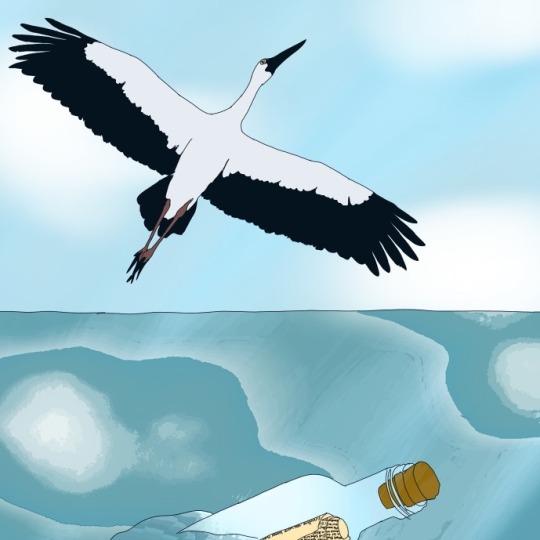
Did some bird flap it’s wings over in Asia? Did some force take you because I didn’t pray?- Bigger Than The Whole Sky, Taylor Swift
#taylor swift#Asian openbill stork#bttws#bigger than the whole sky#digital art#lyric art#taylornation#digital painting#fan art#digitaldesign#midnights#midnights 3am#yes it’s a stork like babies bc this song is like child loss to ME I am not speculating about Taylor’s grief#call it what you want queue
1 note
·
View note
Text
Blackthorn Character Index
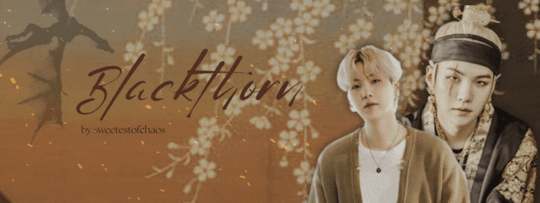
𝐵𝑒𝑙𝑜𝑤 𝑖𝑠 𝑎 𝑙𝑖𝑠𝑡 𝑜𝑓 𝑐ℎ𝑎𝑟𝑎𝑐𝑡𝑒𝑟𝑠 𝑡ℎ𝑎𝑡 𝑠ℎ𝑜𝑤 𝑡ℎ𝑟𝑜𝑢𝑔ℎ𝑜𝑢𝑡 𝑡ℎ𝑒 𝐵𝑙𝑎𝑐𝑘𝑡ℎ𝑜𝑟𝑛 𝑠𝑒𝑟𝑖𝑒𝑠. 𝐼 𝑤𝑖𝑙𝑙 𝑠𝑝𝑙𝑖𝑡 𝑖𝑡 𝑖𝑛𝑡𝑜 𝑡ℎ𝑒 𝑃𝑎𝑠𝑡 𝑎𝑛𝑑 𝑃𝑟𝑒𝑠𝑒𝑛𝑡 𝑑𝑎𝑦 𝑠𝑜 𝑡ℎ𝑎𝑡 𝑖𝑡 𝑖𝑠 𝑒𝑎𝑠𝑖𝑒𝑟 𝑡𝑜 𝑢𝑛𝑑𝑒𝑟𝑠𝑡𝑎𝑛𝑑. 𝐼𝑓 𝑦𝑜𝑢 ℎ𝑎𝑣𝑒 𝑎𝑛𝑦 𝑞𝑢𝑒𝑠𝑡𝑖𝑜𝑛𝑠, 𝑝𝑙𝑒𝑎𝑠𝑒 𝑟𝑒𝑎𝑐ℎ 𝑜𝑢𝑡 𝑎𝑛𝑑 𝑎𝑠𝑘.

a/n: banner made by @sailoryooons | divider made myself | series masterlist

- The Past -
The Min Empire
𝑇𝘩𝑒 𝑀𝑖𝑛 𝑅𝑜𝑦𝑎𝑙𝑡𝑦
Emperor Chungho - Yoongi’s mother | dragon
Empress Eunkyung - Yoongi’s father | dragon
First Prince Yoongi - Only child of the royal family | vessel of Agust’s spirit | dragon
𝑇𝘩𝑒 𝑀𝑖𝑛 𝐺𝑢𝑎𝑟𝑑𝑠
Daehyun - Commander of the royal guard | human
Hoseok - lieutenant of the royal guard | Yoongi’s childhood friend and personal guard | firebird
Mingi - soldier of the royal guard | Princess Keena’s personal guard | human
Minho - soldier of the royal guard | Princess Keena’s personal guard | human
Chan - soldier of the royal guard | Princess Keena’s personal guard | human
Jooheon - soldier of the royal guard | Wonho’s cousin | Princess Keena’s personal guard | human/mountain dwarf
Wonho - soldier of the royal guard | Jooheon’s cousin | Princess Keena’s personal guard | human/mountain dwarf
San - soldier of the royal guard | Princess Keena’s personal guard | kitsune
Kai - soldier of the royal guard | Princess Keena’s personal guard | human/dire wolf
𝑇𝘩𝑒 𝑀𝑖𝑛 𝑀𝑎𝑖𝑑𝑠
Yongsun - head maid of the royal family | Princess Keena’s personal maid | human
Byulyi - maid of the royal family | Princess Keena’s personal maid | human
Wheein - maid of the royal family | Princess Keena’s personal maid | human
Hyejin - maid of the royal family | Princess Keena’s personal maid | human
𝑇𝘩𝑒 𝑀𝑖𝑛 𝑆𝑡𝑎𝑓𝑓
Seokjin - next royal advisor | Prince Yoongi’s childhood friend | human
Namjoon - next head gardener | Prince Yoongi’s childhood friend | human
Hyungwon - royal physician | human
Feno - head bird handler | Empress Eunkyung’s eyes in the sky | human
Youngjae - royal advisor’s attendant | otter
Duttu - jeweler/craftsmen of the royal family | human
Hyunjin - hidden artist to the royal family | painter of the butterfly house | human
Menzo - dressmaker of the royal family | personal seamstress for the Princess’ engagement/wedding dress | nekojin
𝑇𝘩𝑒 𝑀𝑖𝑛 𝑇𝑢𝑡𝑜𝑟𝑠
Zarrin Tajik - etiquette tutor | siren
Wen - language arts tutor | oni
Kwangseon - husband of Ellarian | music tutor | human
Ellarian - wife of Kwangseon | dance tutor | elf
Tempus - history tutor | giant tortoise
Saina - civics tutor | unicorn
Keijo Tammi - species studies tutor | naga
Madam Theda Vonner - etiquette tutor | human
𝑇𝘩𝑒 𝑀𝑖𝑛 𝑃𝑒𝑡𝑠
Jungkook - painter | "Cookie" | ginkgo tiger
Jimin - a gift to the Princess from the Empress | "Mini" | charoite winged lovebird
Taehyung - a gift to the Princess from the Empress | "Taetae" | charoite winged lovebird
Escistan Nation
𝑇𝘩𝑒 𝐸𝑠𝑐𝑖𝑠𝑡𝑎𝑛 𝑅𝑜𝑦𝑎𝑙𝑡𝑦
King Baasi - Keena’s father | grey crowned crane
Queen Tiali - Keena’s mother | Impundulu | hamerkop
Princess Keena - first and only daughter of the royal family | impundulu | hamerkop
Prince Badru - First Prince | grey crowned crane
Prince Fulata - Second Prince | hamerkop
Prince Jata - Third Prince | grey crowned crane
Prince Duka - Fourth Prince | hamerkop
𝑇𝘩𝑒 𝐸𝑠𝑐𝑖𝑠𝑡𝑎𝑛 𝐺𝑢𝑎𝑟𝑑𝑠
Aga - husband of Izaso | soldier of the royal guard | Princess Keena’s personal guard | citron crane
Nil - soldier of the royal guard | klei eagle
𝑇𝘩𝑒 𝐸𝑠𝑐𝑖𝑠𝑡𝑎𝑛 𝑀𝑎𝑖𝑑𝑠
Izaso - wife of Aga | head maid of royal family | Princess Keena’s personal maid | openbill stork
Alinafe - maid of royal family | Princess Keena’s personal maid | openbill stork
Fatsani - maid of royal family | Princess Keena’s personal maid | openbill stork
Limbani - maid of royal family | Princess Keena’s personal maid | openbill stork
Chimika - maid of royal family | Princess Keena’s personal maid | openbill stork

- The Present -
...tbd...
2 notes
·
View notes
Text
About Sunderbans National Park
Information About Sunderbans National Park, India
Covering an expanse of approximately 10,000 square kilometers, the Sundarbans forest spans across both India and Bangladesh. India claims around 4,262 square kilometers of this natural marvel, while the rest falls within Bangladesh's territory. Sundarbans National Park occupies the Indian portion, renowned globally for hosting the largest mangrove forest on the planet. This national park is a haven for nature enthusiasts and wildlife aficionados alike. With its thick mangrove cover, intricate network of river channels, picturesque estuaries, and a thriving population of Royal Bengal Tigers and various other wildlife species, the Sundarbans offers a captivating landscape that beckons visitors from far and wide. Recognized as a UNESCO World Heritage Site, the park possesses a unique allure that draws tourists seeking unparalleled natural beauty and biodiversity experiences.
Located at the southeastern edge of the 24 Paraganas district in West Bengal, India, the Sundarbans National Park derives its name from the Sundari mangrove plant (Heritiera Minor). Situated within the world's largest delta formed by the Ganges, Brahmaputra, and Meghna rivers, this national park covers an expansive area of approximately 2585 square kilometers, making it India's largest national park and tiger reserve. The Sundarbans region encompasses around 2125 square kilometers of mangrove forest, while the remaining area, spread across 56 islands, is dominated by water bodies, totaling 4262 square kilometers.
Flora in Sundarbans National Park:
The Sundarbans, renowned as the largest mangrove forest globally, boasts the mangrove tree as its flagship species, thriving uniquely in its waterlogged terrain. With remarkable adaptability, these trees endure prolonged inundation by sending up spikes from their roots, aiding respiration and providing structural support to the mangrove ecosystem. Among its diverse array of flora, the Sundarbans is home to the 'Sundari' mangrove, a distinctive variety that dominates the landscape and lends its name to the forest. Encompassing over 300 plant species, the Sundarbans region harbors a rich botanical tapestry.
Fauna in Sundarbans National Park:
The Sundarbans National Park, dominated by the majestic Royal Bengal Tigers, reigns supreme as the apex predator with a population exceeding 400 individuals. These iconic tigers exhibit remarkable swimming prowess in the park's salty waters and are notorious for their occasional predation on humans. While tourists flock to catch a glimpse of these striped wonders, the park harbors a diverse array of fauna that equally captivates wildlife enthusiasts.
In addition to the Bengal Tigers, Sundarbans teems with captivating wildlife such as Fishing Cats, Leopards, Macaques, Wild Boars, Wild Buffaloes, Rhinoceroses, Indian Mongooses, Jungle Cats, Foxes, Flying Foxes, Pangolins, Barking Deer, Spotted Deer, Hog Deer, and Chitals. The park is also home to saltwater crocodiles and various snake species, adding to its rich biodiversity.
Moreover, Sundarbans boasts a vibrant avian population, featuring a kaleidoscope of exotic birds. Among them are Openbill Storks, Black-capped Kingfishers, Black-headed Ibises, Coots, Water Hens, Pheasant-tailed Jacanas, Brahminy Kites, Pariah Kites, Marsh Harriers, Swamp Partridges, Red Junglefowl, Spotted Doves, Common Mynahs, Jungle Crows, Jungle Babblers, Cotton Teals, Herring Gulls, Caspian Terns, Gray Herons, Common Snipes, Wood Sandpipers, Green Pigeons, Rose-ringed Parakeets, Paradise-flycatchers, Cormorants, Grey-headed Fish Eagles, White-bellied Sea Eagles, Seagulls, Common Kingfishers, Peregrine Falcons, Woodpeckers, Whimbrels, Black-tailed Godwits, Little Stints, Eastern Knots, Curlews, Golden Plovers, Northern Pintails, White-eyed Pochards, and Whistling Teals. These avian residents contribute to the park's enchanting atmosphere, making it a paradise for birdwatchers and nature lovers alike.
Climate of Sundarbans National Park:
The climate in the Sunderbans forest is generally temperate and pleasant, with temperatures ranging from 20 to 48 degrees Celsius. Due to its proximity to the Bay of Bengal, humidity levels are consistently high, averaging around 80%, and heavy rainfall is common. The summer season, lasting from March to May, is characterized by hot and humid weather. Monsoon conditions prevail from mid-May to mid-September, marked by increased humidity and windy conditions. The region frequently experiences storms, particularly in May and October, which can escalate into cyclones. Winter sets in from October to February, bringing colder temperatures to the area.
2 notes
·
View notes
Text
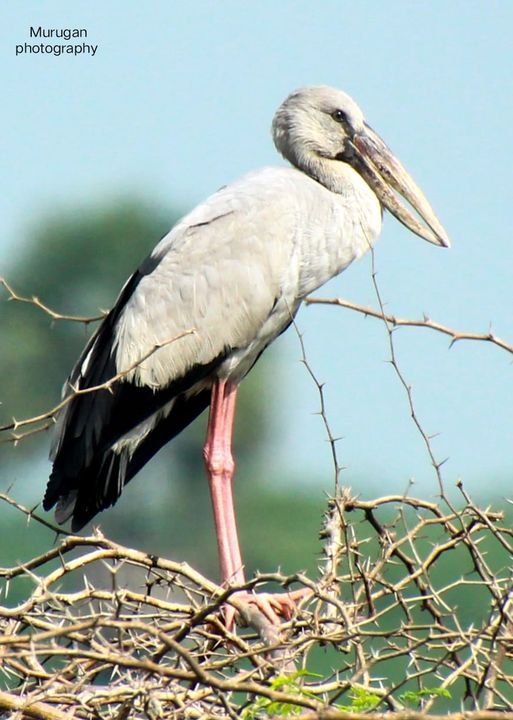
Asian Openbill Stork (Anastomus oscitans), family Ciconiidae, order Ciconiiformes, India
photograph by Murugan
Thai native.
77 notes
·
View notes
Note
Also worth noting that we saw a beautiful black headed ibis and a whole tree full of openbill storks but I couldn't get good photos of them :/
Ranthambore's safari was amazing tho definitely worth going there at least once (and more times in different seasons if you wanna see other migratory birds :D)
Next on my list are Kaziranga and Bharatpur Bird Sanctuary I hope I get a chance to go there soon 🤞
Ohhh that is so cool! Openbills are so funky-looking I love them!! The frustration of seeing a really cool bird and not being able to get a pic though haha
I’ve been to Ranthambore as a smol kid but that was wayyy before my dad and I were into birding so we didn’t get any pictures or an observation list 😭😭😭 I really hope I get to go again!!
Kaziranga and Bharatpur seem incredible, I’d love to go too someday!! And if you’re ever down south, check out Dandeli in Karnataka! Western Ghats birbs are on a whole other level fr
9 notes
·
View notes
Video
youtube
Asian Openbill Stork In Kukkarahalli Lake Mysore (HD)
#youtube#Bird#Birds#Stork#Openbill#Asian Openbill#Asian Openbill Stork#Gap Between Beak#Large Wader#Freshwater Bird#Migratory Bird#White Plumage#Fish Eaters#Kukkarahalli Lake Mysore#Kukkarahalli Kere Mysore
0 notes
Text

[402/10,977] Asian Openbill - Anastomus oscitans
Order: Ciconiiformes (storks)
Family: Ciconiidae
Photo credit: Raghavendra Pai via Macaulay Library
7 notes
·
View notes
Note
Name every bird
Abbott's babbler
Abbott's booby
Abbott's starling
Abd al-Kuri sparrow
Abdim's stork
Aberdare cisticola
Aberrant bush warbler
Abert's towhee
Abyssinian catbird
Abyssinian crimsonwing
Abyssinian ground hornbill
Abyssinian ground thrush
Abyssinian longclaw
Abyssinian owl
Abyssinian roller
Abyssinian scimitarbill
Abyssinian slaty flycatcher
Abyssinian thrush
Abyssinian waxbill
Abyssinian wheatear
Abyssinian white-eye
Abyssinian woodpecker
Acacia pied barbet
Acacia tit
Acadian flycatcher
Aceh bulbul
Acorn woodpecker
Acre antshrike
Acre tody-tyrant
Adamawa turtle dove
Adelaide's warbler
Adélie penguin
Admiralty cicadabird
Afep pigeon
Afghan babbler
Afghan snowfinch
African barred owlet
African black duck
African black swift
African blue flycatcher
African blue tit
African broadbill
African citril
African collared dove
African crake
African crimson-winged finch
African cuckoo
African cuckoo-hawk
African darter
African desert warbler
African dusky flycatcher
African dwarf kingfisher
African emerald cuckoo
African finfoot
African firefinch
African fish eagle
African golden oriole
African goshawk
African grass owl
African green pigeon
African grey flycatcher
African grey hornbill
African grey woodpecker
African harrier-hawk
African hawk-eagle
African hill babbler
African hobby
African hoopoe
African jacana
African marsh harrier
African olive pigeon
African openbill
African oystercatcher
African palm swift
African paradise flycatcher
African penguin
African piculet
African pied hornbill
3 notes
·
View notes